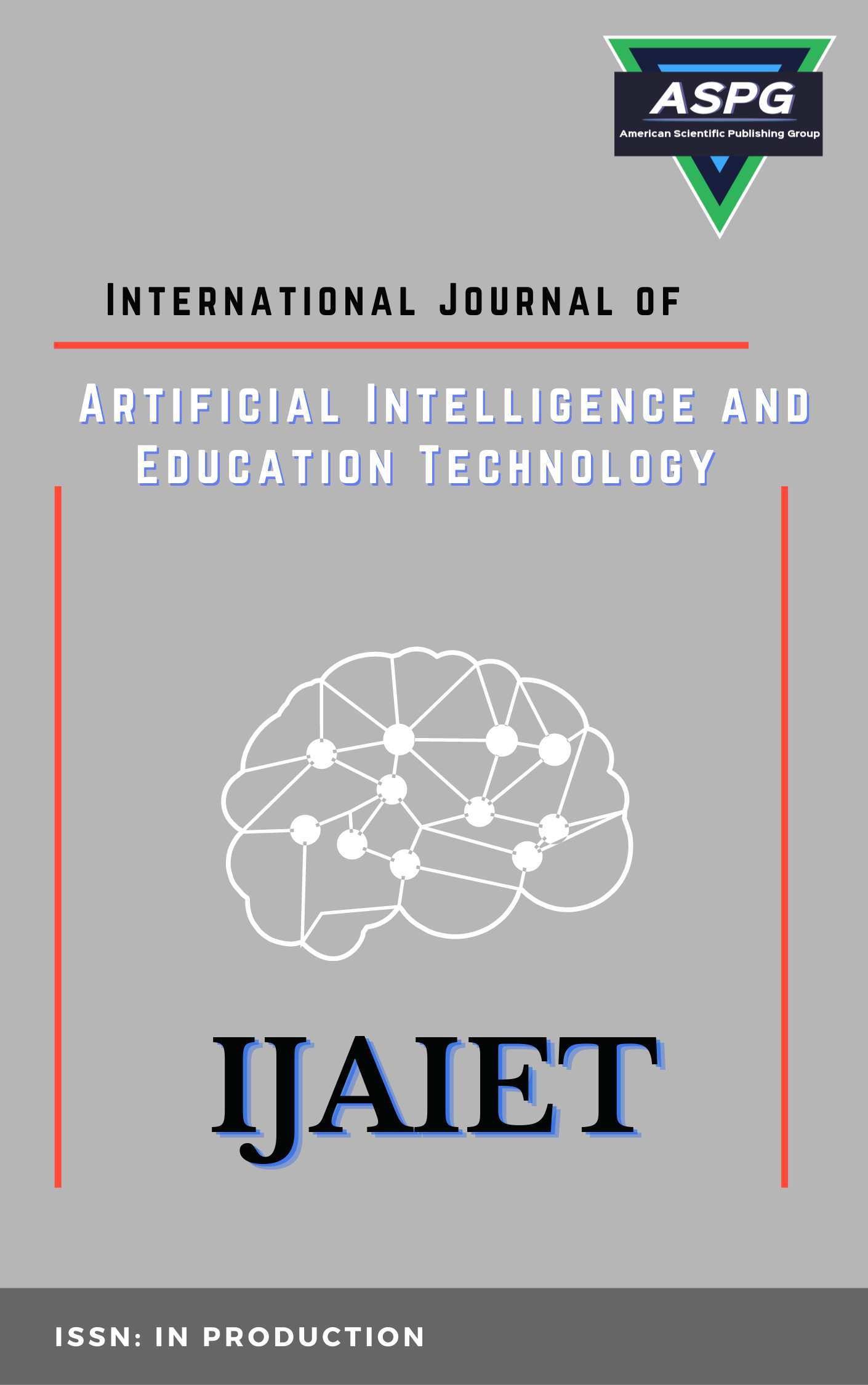

Volume 2 , Issue 1 , PP: 08-12, 2023 | Cite this article as | XML | Html | PDF | Full Length Article
Hojiyeva Iroda Avezovna 1 *
Doi: https://doi.org/10.54216/IJAIET.020101
This bibliographic analysis explores the use of social media tools in education and their impact on teaching and learning experiences. The analysis reviews research literature to provide evidence of the positive effects of social media tools on various aspects of education, including student engagement, critical thinking skills, academic achievement, and learning outcomes. YouTube videos are highlighted as particularly effective in promoting critical thinking skills and improving students' comprehension and retention of information. Additionally, social media platforms like Facebook are discussed as effective learning management systems, facilitating communication and collaboration among students and teachers. The flipped classroom model, which incorporates social media tools, is also examined for its positive effects on student learning. However, the successful integration of social media tools in education depends on factors such as instructional design, teacher training, and copyright considerations. Further research is needed to explore the long-term effects and potential challenges associated with the use of social media tools in education. Overall, this analysis emphasizes the opportunities that social media tools offer educators to enhance teaching and learning experiences, promote student engagement and collaboration, and improve learning outcomes. It underscores the importance for educators to stay informed about the latest research and best practices in utilizing social media tools effectively in educational settings as technology continues to evolve.
social media tools , Facebook , Instagram , YouTube , Twitter , education , video , content
[1] Al-Rahmi, W. M., Yahaya, N., Aldraiweesh, A., & Saged, A. A. (2019). The impact of YouTube videos on students' critical thinking skills in teaching and learning process in Saudi Arabia. Journal of Educational Technology Systems, 47(2), 248-267.
[2] Bartsch, R. A., & Rienties, B. (2018). A typology of student video use in higher education. Learning, Media and Technology, 43(1), 1-22.
[3] Bower, M., Dalgarno, B., Kennedy, G. E., Lee, M. J., & Kenney, J. (2015). Design and implementation factors in blended synchronous learning environments: Outcomes from a cross-case analysis. Computers & Education, 86, 1-17.
[4] Bulger, S. R., Mayer, R. E., Almeroth, K. C., & Blau, S. D. (2016). Measuring learner engagement in computer-enabled classrooms. Journal of Educational Multimedia and Hypermedia, 25(2), 101-113.
[5] Chen, C. M., & Hwang, G. J. (2018). Effects of multimedia annotation strategies on vocabulary and reading comprehension for English language learners. Interactive Learning Environments, 26(7), 855-872
[6] Chen, H. L., Huang, C. Y., & Lin, Y. C. (2019). Flipped classroom model for learning English: A systematic review. Educational Technology & Society, 22(3), 103-116.
[7] Chen, L., Wang, W., & Wang, H. (2017). The effects of video-assisted instruction on college EFL learners' listening comprehension skills and strategy use. Computer Assisted Language Learning, 30(7), 563-582.
[8] Chen, S. Y., & Hsieh, J. S. (2020). The impacts of interactive video-enhanced flipped learning on students' learning motivation and academic achievement. Interactive Learning Environments, 28(1), 85-97.
[9] Dennen, V., Myers, J., & Hailey, C. (2017). YouTube in the classroom: A mixed-method analysis of impact on student engagement. Journal of Educational Computing Research, 55(8), 1135-1159.
[10] Hew, K. F., & Cheung, W. S. (2013). Use of Web 2.0 technologies in K-12 and higher education: The search for evidence-based practice. Educational Research Review, 9, 47-64.
[11] Hsiao, H. S., Chen, J. C., & Kao, H. C. (2019). The effects of YouTube learning on students' mathematics achievement and attitude in flipped classroom. Journal of Educational Technology & Society, 22(2), 173-186.
[12] Inan, F. A., & Lowther, D. L. (2018). Factors affecting technology integration in K-12 classrooms: A path analysis. Educational Technology Research and Development, 66(1), 53-72.
[13] Johnson, L., & Smith, R. (2018). Using YouTube to enhance student engagement and learning outcomes in a large enrollment online course. Journal of Educators Online, 15(1), 1-20.
[14] Kay, R., & Kletskin, I. (2012). Evaluating the use of problem-based video podcasts to teach mathematics in higher education. Computers & Education, 59(2), 619-627.
[15] Kim, M. K., Kim, S. M., Khera, O., & Getman, J. (2016). The experience of three flipped classrooms in an urban university: An exploration of design principles. The Internet and Higher Education, 28, 1-9.
[16] Koc, M., & Bakir, N. (2020). Flipped learning via YouTube: Effects on students' engagement and achievement. Interactive Learning Environments, 28(1), 51-63.
[17] Khan, B. H., & Ghani, U. (2017). YouTube for education: Exploring the potential of video-sharing platform in teaching English to speakers of other languages (TESOL). Journal of Educational Technology Systems, 45(4), 485-503.
[18] Lee, J. W., & Kim, D. (2018). Effects of flipped learning using online materials and video lectures on learning achievement and self-directed learning ability in higher education. Journal of Educational Technology Systems, 47(1), 88-105.
[19] Raffaghelli, J. E., Cucchiara, S., Persico, D., & Trentin, G. (2019). Copyright and open licenses: A case study on the use of YouTube videos in higher education. British Journal of Educational Technology, 50(5), 2439-2452.
[20] Smith, S., Caruso, J. B., & Tunks, K. W. (2016). Video lectures: Comparing student preferences and learning outcomes in online courses. Journal of Online Learning and Teaching,12(1), 1-16.
[21] Snelson, C. (2017). Student engagement and interaction with a flipped classroom approach. Journal of Interactive Learning Research, 28(1), 27-40.
[22] Wang, Q., Woo, H. L., Quek, C. L., Yang, Y., & Liu, M. (2019). Using the Facebook group as a learning management system: An exploratory study. British Journal of Educational Technology, 50(3), 987-1002.
[23] West, R. E., Waddoups, G., & Graham, C. R. (2014). Understanding technology-mediated interaction cycles within blended and online learning environments. Distance Education, 35(3), 333-346.